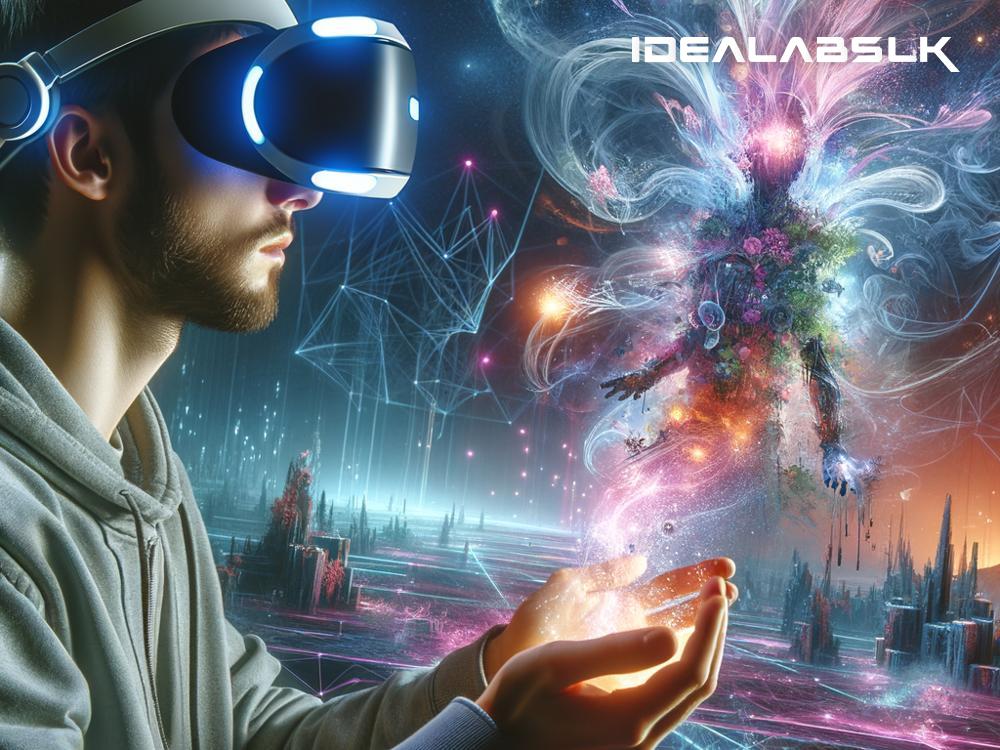Title: How Virtual Reality Is Set to Transform Story-Driven Games by 2025
In the fast-paced world of gaming, technological advancements are always pushing the boundaries of what's possible. One such game-changer is Virtual Reality (VR), a technology that has been promising to revolutionize how we play and experience video games. As we look towards 2025, it's becoming increasingly clear that VR is not just a fleeting trend but is poised to significantly alter the landscape of story-driven games. Here's how VR is set to create a whole new world of immersive storytelling in the near future.
A Step into the Story
Imagine not just playing a game but being inside the game. That's the promise of VR. By 2025, advancements in VR technology will allow gamers to step into meticulously crafted worlds, experiencing stories not as observers, but as active participants. The line between the player and the protagonist blurs in VR, making each decision, interaction, and consequence feel incredibly personal and impactful. This deep level of immersion is set to transform storytelling from a passive to an active experience.
Unprecedented Emotional Engagement
With VR, story-driven games can evoke emotions more potently than ever before. As players literally see the world through the eyes of their characters, the emotional stakes are raised. Experiencing firsthand the lush landscapes, daunting obstacles, and the faces of allies and enemies will create a connection to the game world that's far more visceral than any traditional gaming setup could offer. By 2025, we can expect game developers to master this art, weaving narratives that pull at our heartstrings with unprecedented force.
Interactive Environments that Tell a Story
The environments in story-driven games serve as more than just backdrops; they're an integral part of the storytelling process. With VR, these environments can become fully interactive, filled with details that players can explore up close. This exploration isn't just about admiring the view—it's about uncovering hidden stories, lore, and secrets that enrich the main narrative. By 2025, VR technology will likely enable environments that are not just visually stunning but are also alive with stories waiting to be discovered.
A New Way to Experience Characters
Character interaction is at the heart of any story-driven game. VR takes this to the next level by allowing players to interact with game characters in a more meaningful way. Imagine having a conversation with a game character where you can observe their body language, hear the nuances in their voice, and even make eye contact. This level of detail makes characters feel real, transforming them from mere pixels on a screen into believable companions, adversaries, or mentors. By 2025, advancements in AI and motion capture technology are expected to enrich these interactions, making every conversation and encounter an impactful story moment.
Tailored Narratives
One of the most exciting prospects for VR in story-driven games is the potential for narratives that adapt to the player. This isn't just about choosing between option A or B; it's about the game dynamically changing based on how you interact with the world and its inhabitants. By 2025, we anticipate VR games to have sophisticated algorithms that track your decisions, actions, and even your gaze, adjusting the storyline in real-time to create a truly personalized narrative. This level of narrative flexibility will make each playthrough unique, with endless possibilities for storytelling.
Challenges and Opportunities
The journey towards this future is not without its challenges. Creating deep, immersive VR experiences requires significant technological advancements in VR hardware, software, and game design. Issues such as motion sickness, accessibility, and the high cost of VR equipment must also be addressed to make VR story-driven games widely enjoyable.
However, the opportunities are immense. By overcoming these hurdles, developers can create game experiences that are more engaging, emotional, and immersive than anything we've seen before. The potential for VR to shift the paradigm of storytelling in games is enormous, promising a future where we don't just play stories—we live them.
The Road Ahead
As we look towards 2025, the future of story-driven games in VR is bright with possibilities. From stepping into the shoes of complex characters to exploring rich, interactive worlds, VR is set to redefine our gaming experiences. While there are challenges to overcome, the progress in VR technology and game design indicates that we're on the cusp of a storytelling revolution. Prepare to not just play stories, but to step into them, feeling and influencing the narrative in ways we've only begun to imagine. The future of story-driven games is not just about watching stories unfold; it's about being an integral part of them, and VR is the key to unlocking this incredible potential.

